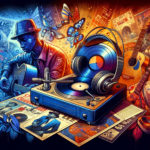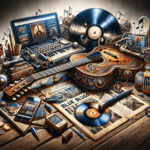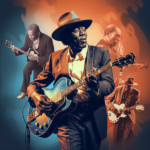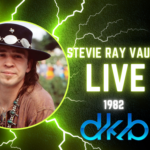Blues in the Digital Age: How the Internet Reviving the Genre
The blues, born in the Deep South of the United States over a century ago, has always been a genre steeped in tradition and authenticity. Its melancholic melodies, soul-baring lyrics, and deeply rooted history have earned it a hallowed place in the annals of music. However, like any art form, the blues has not been immune to the winds of change. In the digital age, where music is accessible with a few clicks, the blues has experienced a renaissance of sorts. This article delves into how the internet has breathed new life into the genre, fostering a global community of enthusiasts and artists, and ensuring the blues remains as relevant and vibrant as ever.
The Evolution of Blues in a Digital Landscape
The blues has always been a genre that tells stories, often stories of hardship, heartache, and resilience. In the early 20th century, blues pioneers used their guitars and voices to communicate their experiences to the world. Fast forward to the digital age, and the blues has found a new platform for its narratives. The internet, with its vast reach and democratizing potential, has become the perfect medium for the blues to thrive.
Global Accessibility and Discovery
One of the most significant ways the internet has revived the blues is by making it accessible to a global audience. No longer confined to juke joints or regional scenes, blues music can now be discovered and enjoyed by anyone with an internet connection. Streaming platforms, social media, and online forums have opened the doors to the blues for enthusiasts in every corner of the world.
Music streaming services like Spotify, YouTube, and Apple Music have extensive libraries of blues tracks, allowing listeners to explore the genre’s rich history and discover contemporary artists with ease. Blues aficionados from Tokyo to Buenos Aires can now immerse themselves in the soulful sounds of Mississippi Delta, Chicago, and beyond.
Community Building and Collaboration
The internet has also facilitated the creation of a global blues community. Online forums, social media groups, and dedicated blues websites have become gathering places for enthusiasts and artists alike. Musicians can connect with fans and fellow musicians, sharing their music, stories, and insights into the genre.
Platforms like Facebook and Instagram allow blues artists to interact directly with their audience, sharing live performances, behind-the-scenes glimpses, and personal anecdotes. This sense of connection has fostered a renewed appreciation for the blues, and it’s not uncommon to see artists collaborating across continents, blending traditional blues elements with modern influences.
Discovery of Hidden Gems
The digital age has not only made it easier to access mainstream blues but has also shone a light on obscure and forgotten artists. Previously overlooked blues musicians from decades past are being rediscovered and celebrated by enthusiasts and collectors. Online record stores and music archives have made it possible to explore the depths of blues history, unearthing rare recordings and hidden gems.
This revival of interest in lesser-known blues artists has not only expanded the genre’s repertoire but has also given these musicians the recognition they may have missed during their lifetimes. It’s a testament to the internet’s power to breathe new life into the past and ensure that the blues tradition is preserved for future generations.
Independent Artistry and Crowdfunding
The internet has allowed independent blues artists to break free from the constraints of major record labels. Many musicians now have the tools to record and release their music independently, reaching a global audience without the need for a traditional record deal.
Crowdfunding platforms like Kickstarter and Patreon have become essential resources for blues artists looking to fund their projects. Supporters from around the world can contribute to album production, music videos, and even tours, enabling artists to maintain creative control while building a dedicated fan base.
Blues Reimagined: The Role of Technology
Technology has played a crucial role in reshaping the blues genre for the digital age. Musicians are not only preserving tradition but also pushing the boundaries of what blues can be. Here are a few ways technology has influenced the blues’ evolution:
Home Recording Studios
The affordability of recording equipment has allowed blues artists to create professional-quality recordings from the comfort of their homes. This DIY approach has empowered musicians to experiment with different sounds, styles, and production techniques, leading to a diverse and innovative blues landscape.
Digital Effects and Instrumentation
Advancements in digital effects pedals and virtual instrument libraries have expanded the sonic palette available to blues musicians. Guitarists can now achieve a wide range of tones and textures, from classic Delta slide to modern blues-rock, all with the help of digital technology.
Live Streaming and Virtual Concerts
The COVID-19 pandemic forced artists to adapt to new ways of connecting with their audience. Live streaming platforms like Zoom, Facebook Live, and Twitch became virtual stages for blues musicians to perform, interact with fans, and even collaborate with other artists from different parts of the world.
While live streaming was initially a response to pandemic restrictions, it has since become a valuable addition to the blues scene, allowing artists to reach a global audience in real time.
Digital Distribution and Sales
Digital distribution platforms have made it easy for artists to release and distribute their music worldwide. Independent musicians can upload their tracks to platforms like Spotify, iTunes, and Amazon Music, reaching listeners without the need for physical distribution or major record labels.
The Resilience of Blues in a Changing World
The blues has always been a genre that reflects the
human experience in all its complexity. It speaks to life’s highs and lows, its joys and sorrows, and its enduring resilience. As the world changes, the blues remains a constant, adapting to new technologies and finding ways to connect with audiences.
A New Generation of Blues Enthusiasts
Contrary to the belief that the blues is a dying genre, the internet has ushered in a new generation of blues enthusiasts. Young musicians are discovering the blues and infusing it with fresh energy, incorporating elements from other genres and pushing the boundaries of what blues can sound like.
Online blues communities and educational resources have made it easier than ever for aspiring musicians to learn the blues, study its history, and find like-minded peers. As a result, the genre is experiencing a resurgence, attracting a diverse range of artists and fans.
Blues Festivals in the Digital Sphere
Even traditional blues festivals have adapted to the digital age. While live festivals remain a beloved tradition, many events now offer live streaming options, allowing blues enthusiasts from around the world to participate in the experience.
These digital festivals not only showcase established blues artists but also provide a platform for emerging talent. They have become a testament to the enduring appeal of the blues and its ability to bring people together, regardless of geographical boundaries.
Conclusion
In a world where music genres rise and fall with the changing tides of popular culture, the blues stands as a testament to the enduring power of artistry and human expression. The internet has played a pivotal role in reviving the blues, connecting a global community of enthusiasts, artists, and historians who are passionate about preserving the genre’s rich tradition.
Through the digital age, the blues has not only found a new audience but has also continued to evolve, adapting to contemporary tastes and technologies. As long as there are storytellers who can channel the joys and sorrows of the human experience through music, the blues will remain a vibrant and enduring genre, carrying its legacy into the future.
As blues enthusiasts continue to explore the vast digital landscape of blues music, the genre’s timeless narratives will find new voices, new stories, and new generations of musicians who will ensure that the blues remains a living, breathing testament to the resilience and authenticity of the human spirit.









